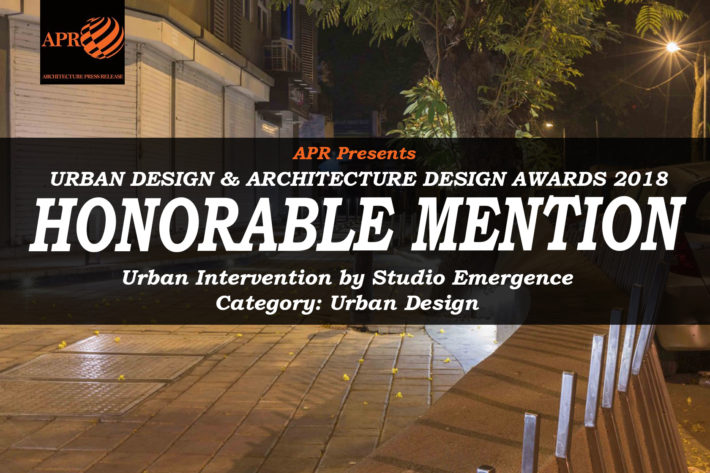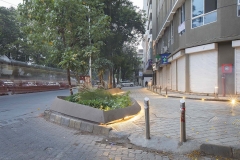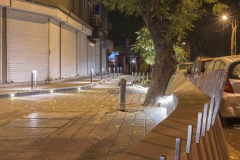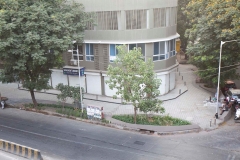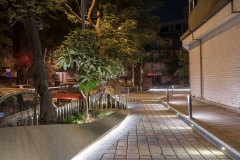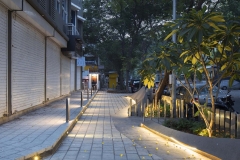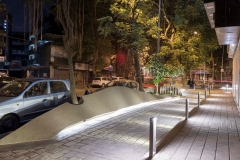The Urban Intervention is implemented to rejuvenate a major road junction in Dadar, Mumbai. This intersection of Gokhale Road leads directly to Worli which is a major hub for commercial and high end residences. This is a widely used junction and though the footpath here is around 5 meters wide, it is usually used to park two wheelers and hawkers thus reducing the usable space considerably. The first conscious decision we made was to retain a 3.5 to 4 meter wide pathway at every point and use the rest of the space as a buffer between the oncoming heavy traffic and pollution and the people using these streets for commute every day.
Urban Design & Architecture Design Awards 2018
Honorable Mention | Category: Urban Design
Architects: Khushbu Davda & Seeja Sudhakaran
Studio: Studio Emergence
Team Members: Seeja Sudhakaran, Priyanka Itadkar, Laukik Lad
Country: India
Website: www.studioemergence.in
Status: Completed – January, 2017
Design Team: Khushbu Davda, Seeja Sudhakaran
Execution: GreenTurf Landscapes
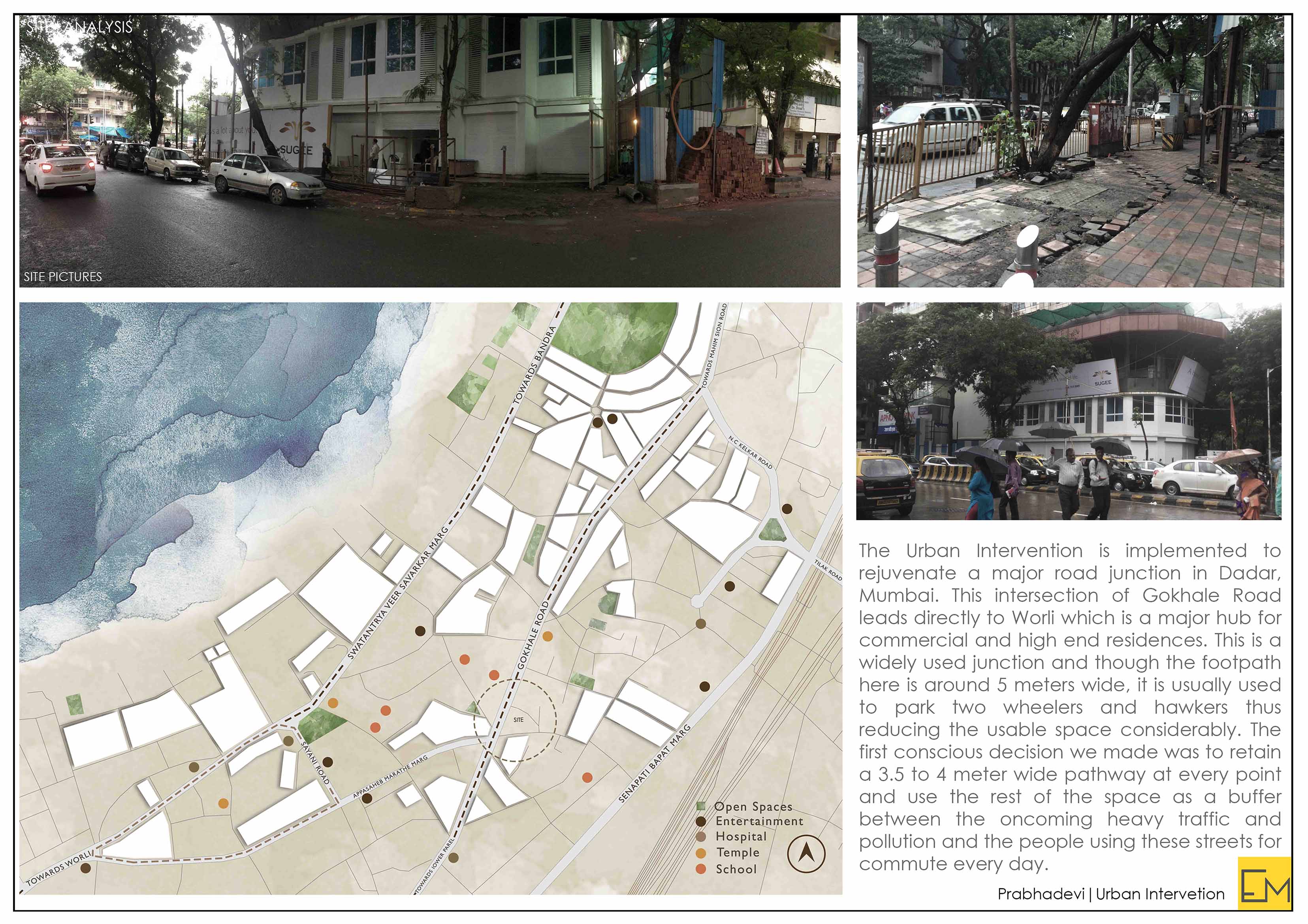
We studied the demographics of the users since it is a public pavement. The intersection is used by people for various reasons ranging from people heading to work to school children to people taking evening walks. It is also a space for community gathering for elderly people.
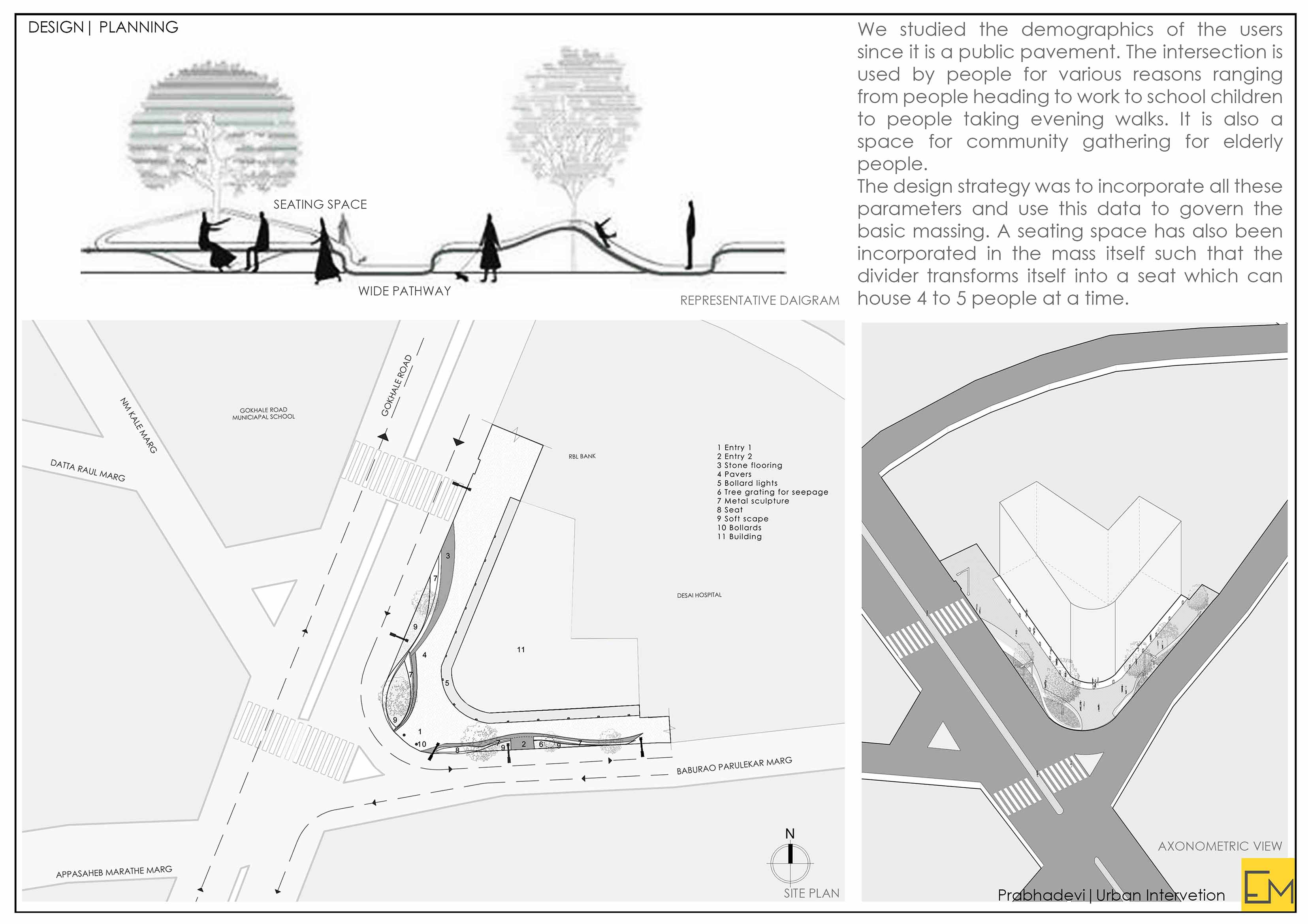
The design strategy was to incorporate all these parameters and use this data to govern the basic massing. A seating space has also been incorporated in the mass itself such that the divider transforms itself into a seat which can house 4 to 5 people at a time.
It was a major challenge to execute the organic design. The varying curves and sectional profile at each point scared of a lot of contractors at first. We managed to convince one to carry on the work though. Detailed drawings of each section were given to ensure the smoothness of the curved surface. A sectional profile was fabricated and placed at every 500 mm and then the profiles were clad with MS Sheets and welded at every joint. These sections were almost 200 in number to ensure the morphology was formed without kinks. This process was much faster compared to using brick work and Cement with shuttering.
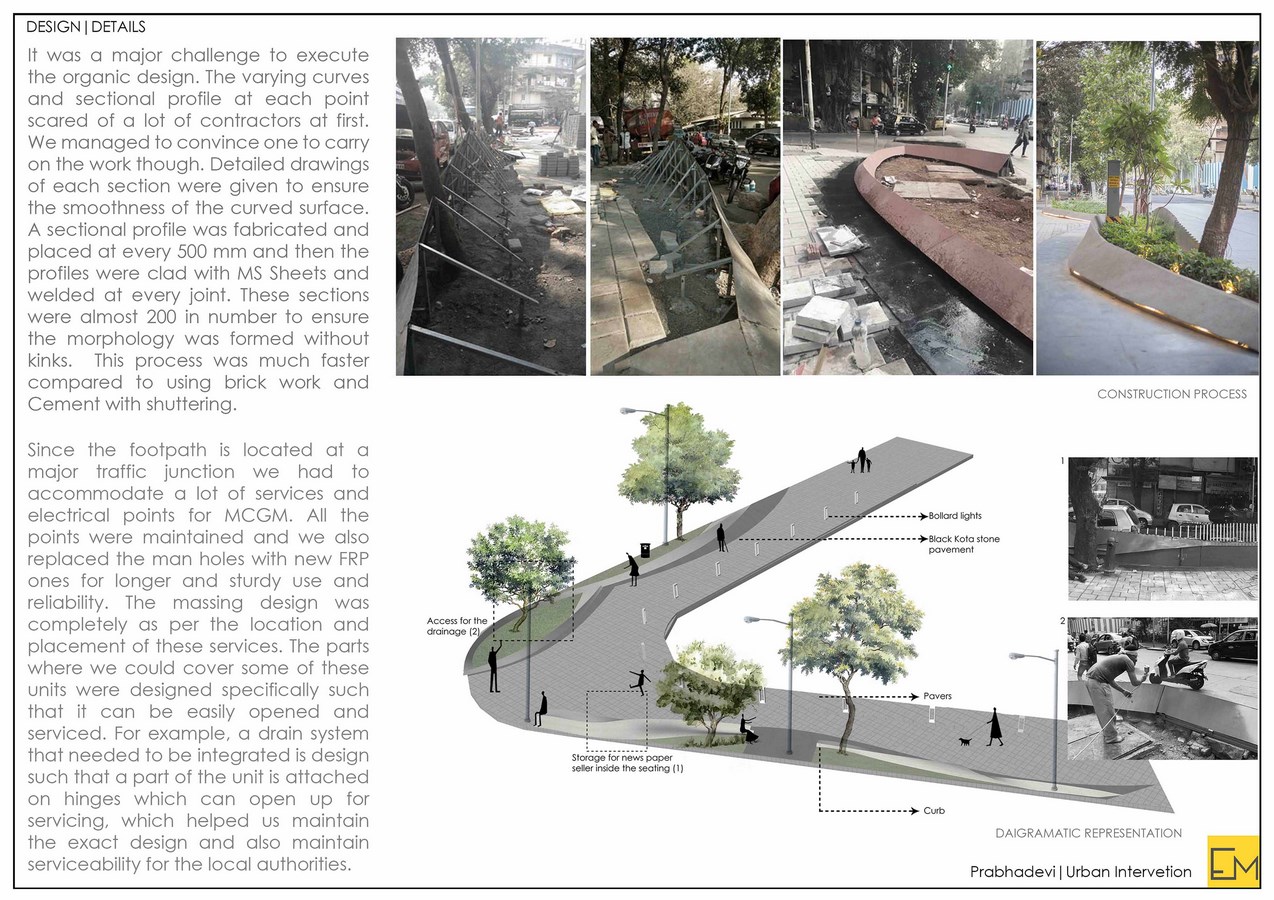
Since the footpath is located at a major traffic junction we had to accommodate a lot of services and electrical points for MCGM. All the points were maintained and we also replaced the man holes with new FRP ones for longer and sturdy use and reliability. The massing design was completely as per the location and placement of these services. The parts where we could cover some of these units were designed specifically such that it can be easily opened and serviced. For example, a drain system that needed to be integrated is design such that a part of the unit is attached on hinges which can open up for servicing, which helped us maintain the exact design and also maintain serviceability for the local authorities.
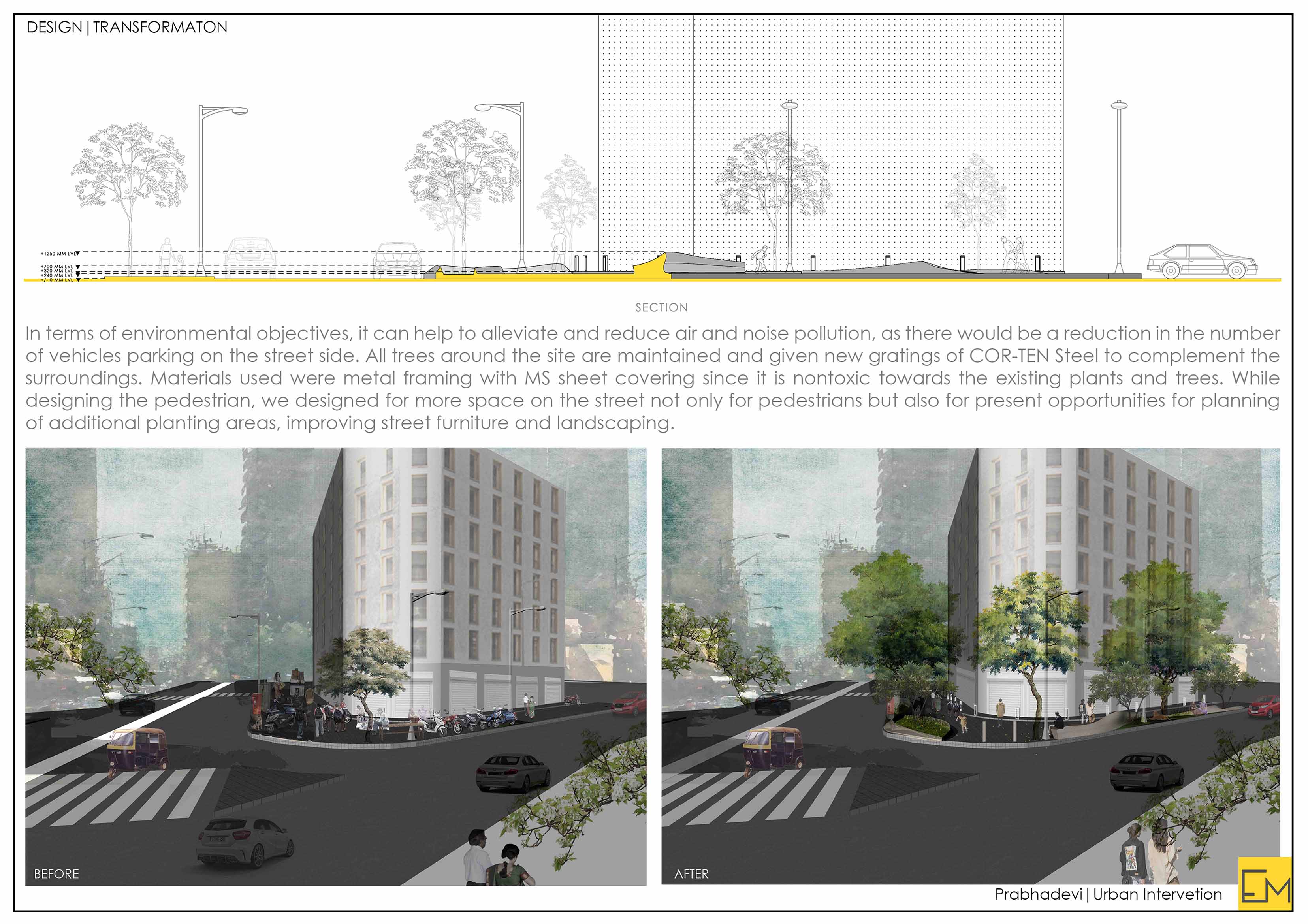
In terms of environmental objectives, it can help to alleviate and reduce air and noise pollution, as there would be a reduction in the number of vehicles parking on the street side. All trees around the site are maintained and given new gratings of COR-TEN Steel to complement the surroundings. Materials used were metal framing with MS sheet covering since it is nontoxic towards the existing plants and trees.
While designing the pedestrian, we designed for more space on the street not only for pedestrians but also for present opportunities for planning of additional planting areas, improving street furniture and landscaping.


